Special for Jerusalem Day: "This is How Houses Looked in Old Jerusalem"
In a 500-year-old building, the Museum of the Old Yishuv Court is located in the Old City. In an engaging conversation, curator Ora Pikel Tzabari tells of the poverty in Jerusalem, the Jordanian captivity, and the continuous aliyah. Jerusalem, then and forever.
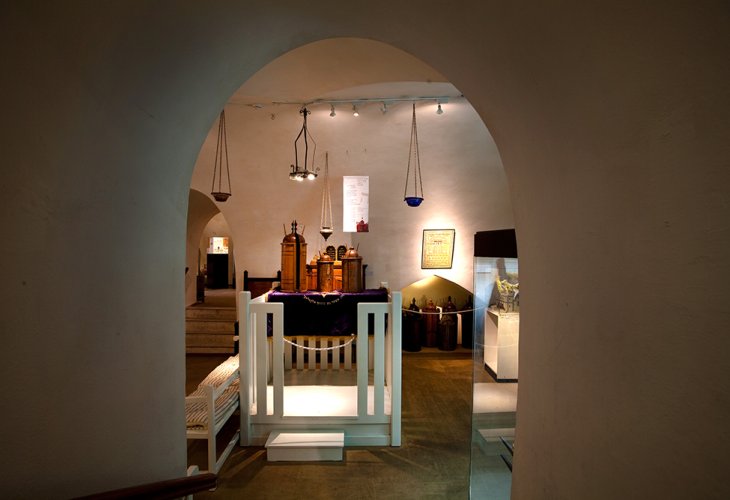
How did Jews live in Jerusalem over the years, what were their livelihoods, and how did their homes look? Anyone who has ever wondered about these questions can find answers at the Museum of the Old Yishuv Court, located in the Jewish Quarter, within a 500-year-old building. In fact, there are almost no such buildings in the Quarter because most of the houses from those times were destroyed in the War of Independence and during the restoration of the Quarter after the Six-Day War.
The museum building is one of three courtyard houses that survived, mainly thanks to Ms. Rivka Wynstein, who was born in one of the rooms of the building. Ora Pikel Tzabari, the museum's chief curator, explains that the Wynstein family had a 'holding' on one of the rooms. "They lived there as tenants, but there was a rule in Jerusalem called 'holding' – if you continued to live in an apartment for more than eleven months despite needing to move, you gained the rights of a 'protected tenant.' This meant that the Wynstein family had a room in the complex that belonged to them.
"Ms. Wynstein told us that she came to the Quarter immediately after the Six-Day War ended and the echoes of the shooting subsided. She saw, unfortunately, that most of the houses in the Quarter were in such a state of ruin that they were uninhabitable, but was surprised to find that her 'house' had survived. As a result, she convinced Teddy Kollek and Levi Eshkol to turn the place into a museum, and then she began collecting artifacts and memories from all the years, acknowledging their great historical significance. To this day, the collection includes more than 14,000 items, along with photographs and documents. Some were collected by Ms. Wynstein, and others were added by us over the years".
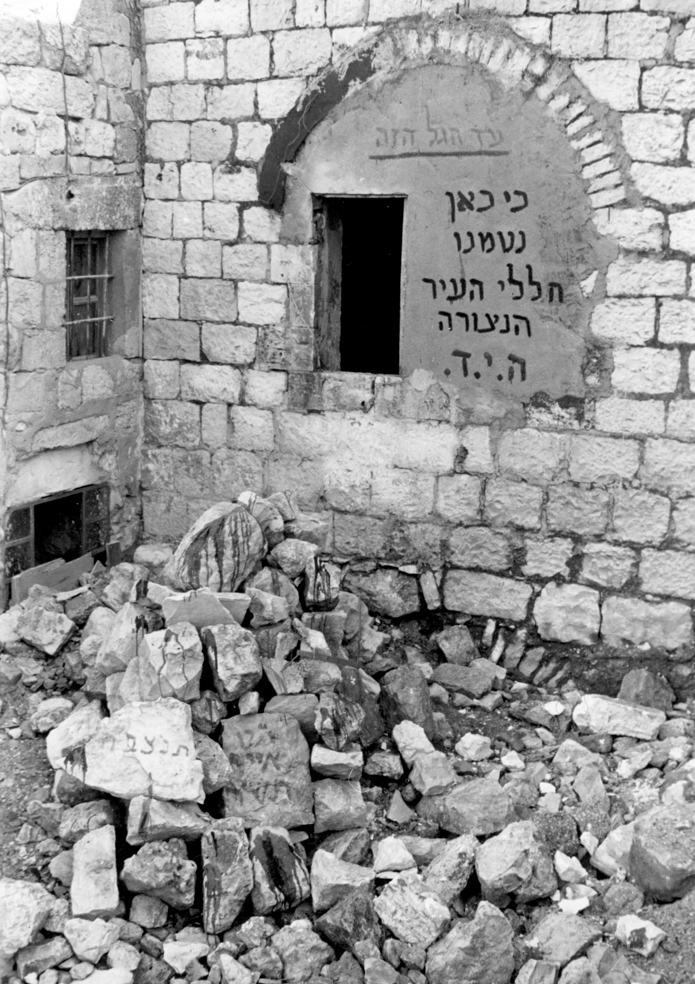 The memorial in the Quarter after the Six-Day War
The memorial in the Quarter after the Six-Day WarFrom Poverty and Humility
How did you acquire all the items displayed in the museum?
"Most of the items came from the residents of the Quarter themselves", Ora explains, "this is also why the collection here is unusual and not at all typical. Unlike other museums, it includes the most ordinary everyday items and not prestigious artifacts. We have, for example, bridal dresses and dowries for brides, suction cups, pots, pans, and even very special religious artifacts. Of course, the significant uniqueness is the location of the museum – in an original courtyard house, exactly as it was for residential purposes in Jerusalem 500 years ago".
What exactly is a courtyard house?
"It is a house with a shared courtyard surrounded by rooms, each occupied by a family. In practicality, most houses in the Jewish Quarter were not owned by Jews but by a Muslim waqf. This meant Jews often had to move residences every eleven months. In our museum, one can take a real journey back in time and see how people lived in these apartment complexes from 500 years ago until 1948, when the Quarter fell during the War of Independence".
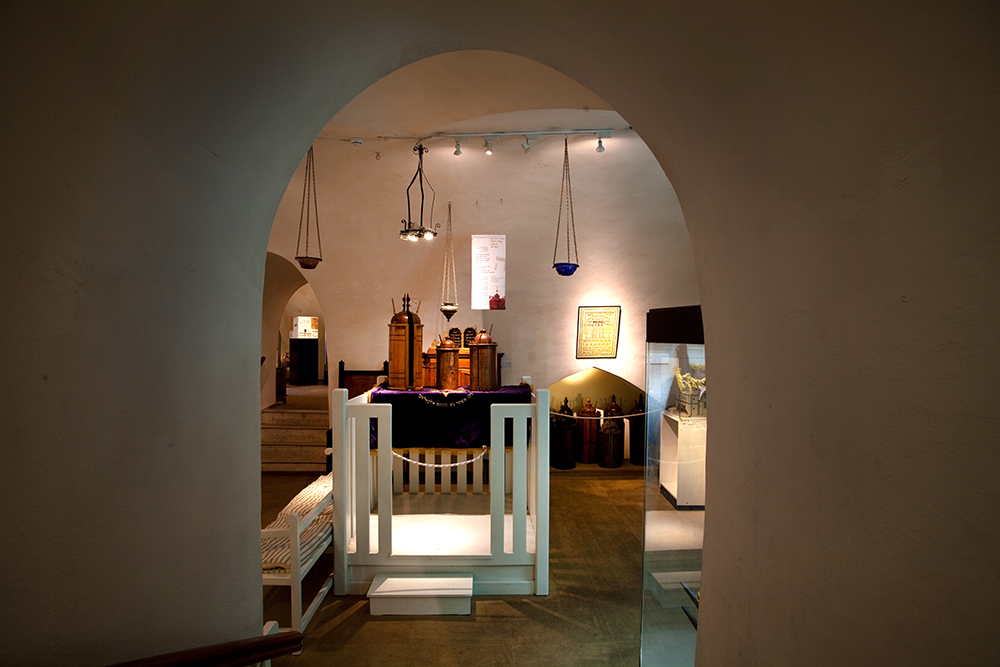 The Arizal's synagogue (Photo: Ran Arda)
The Arizal's synagogue (Photo: Ran Arda)Who were the people who lived in the Jewish Quarter?
"Most of them were people who were not interested in worldly goods; they cared about one thing – living in Jerusalem, as close to the Temple Mount as possible. Over the years, Jews from all over the world came here, motivated by the ideal and desire to die in the holy city. Often those who came were elderly, sometimes childless, and what is surprising is that according to the data we have, 39% of the Quarter's residents were widowed women, many of whom were illiterate. Yet when they sought spiritual elevation, they made aliyah. For a long period, we know of women who arrived in Jerusalem from Morocco and Tunisia. They lived together in a sort of commune, supporting each other and making a living by sifting flour".
Ora mentions that the decision to live in Jerusalem was not an easy one for anyone. "Those who came to live in Jerusalem knew they came to live in great poverty, often with plagues and hunger. It was a tremendous act of self-sacrifice to live in Jerusalem over the years.
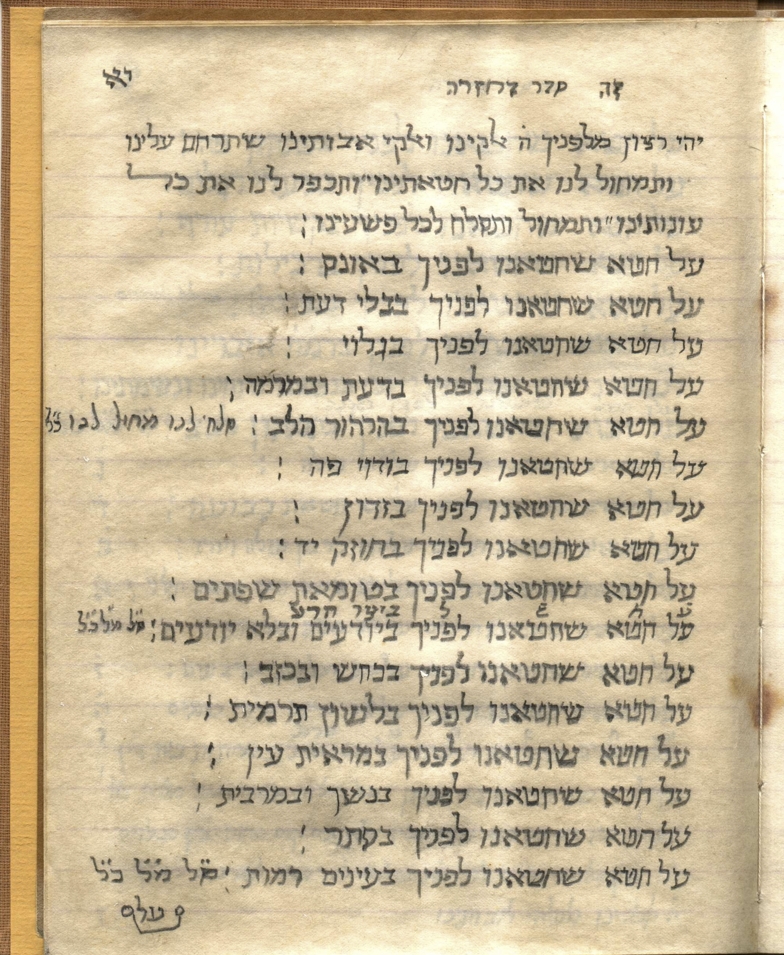 Prayer notebook Amadi
Prayer notebook Amadi"Sometimes", she adds, "we think we invented everything, but it turns out that others did it long before us. For example, we often receive email requests for donations, and some yeshivot or institutions send us small gifts before holidays to remind us of their existence and their need for donations.
"Exactly like this was Jerusalem. We have all sorts of interesting souvenirs, such as challah covers, mizrach boards, sukkah and Shabbat table decorations, which were sent from the Land of Israel to the homes of wealthy people worldwide with the aim of reminding them that while they may sit luxuriously in exile, here in Jerusalem there are Jews living in great poverty, fulfilling the mitzvah of settling the Land of Israel amidst struggle and hardship, so please open your wallets and give them money..."
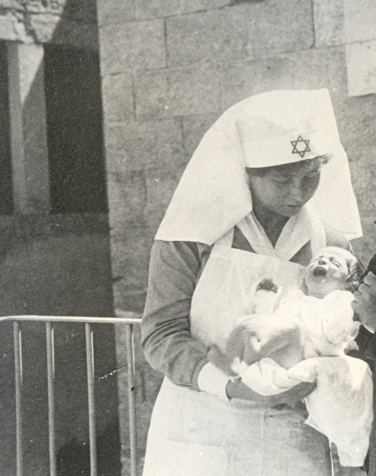 Sunlamp - Tipat Chalav
Sunlamp - Tipat ChalavFrom Wedding Dress to Historical Documents
And what else is in the museum?
"In one of the rooms", Ora narrates, "we have a photo taken by the Hadassah photographers, where you see people of the Old City sitting on the floor in modest clothing, eating from plates placed on the carpet. By the way, the reason they had almost no furniture wasn’t just due to the poverty they suffered, but also, as I mentioned, because they moved every eleven months. Even those who came from a European culture where it was customary to sit on chairs and use tables preferred to have as little heavy furniture as possible in the house. It seemed that worldly goods almost didn’t preoccupy the people of Jerusalem, and they mainly focused on their strong desire to live in Jerusalem. For them, that was the most important thing, and they were willing to give up on higher quality of life for it.
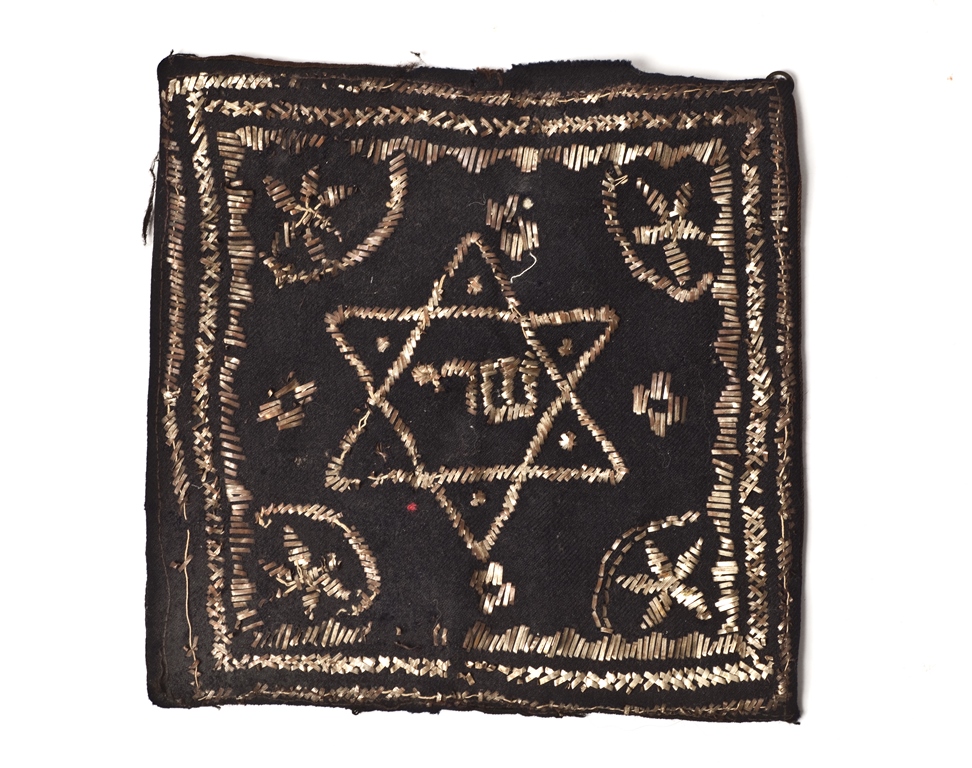 Amulet for a woman in labor (Photo: Ran Arda)
Amulet for a woman in labor (Photo: Ran Arda)"In our museum, you can see displays of three family homes, including a room with an original dowry chest that brides received at the time, and we take the opportunity to tell visitors how in those days, a bride was expected to be a 'balabusta,' essentially a good homemaker, adept in sewing and cooking.
"There’s also a room where we recreated the bed of a woman who had just given birth, as she was the only one afforded the honor and a made and comfortable bed from which she didn’t descend for 40 days. Let’s not forget that we are talking about a time without running water or electricity, 80% of the babies didn’t reach the age of one, and a quarter of the mothers didn’t survive. These are shocking numbers, mainly due to poor sanitation and the near lack of medicines.
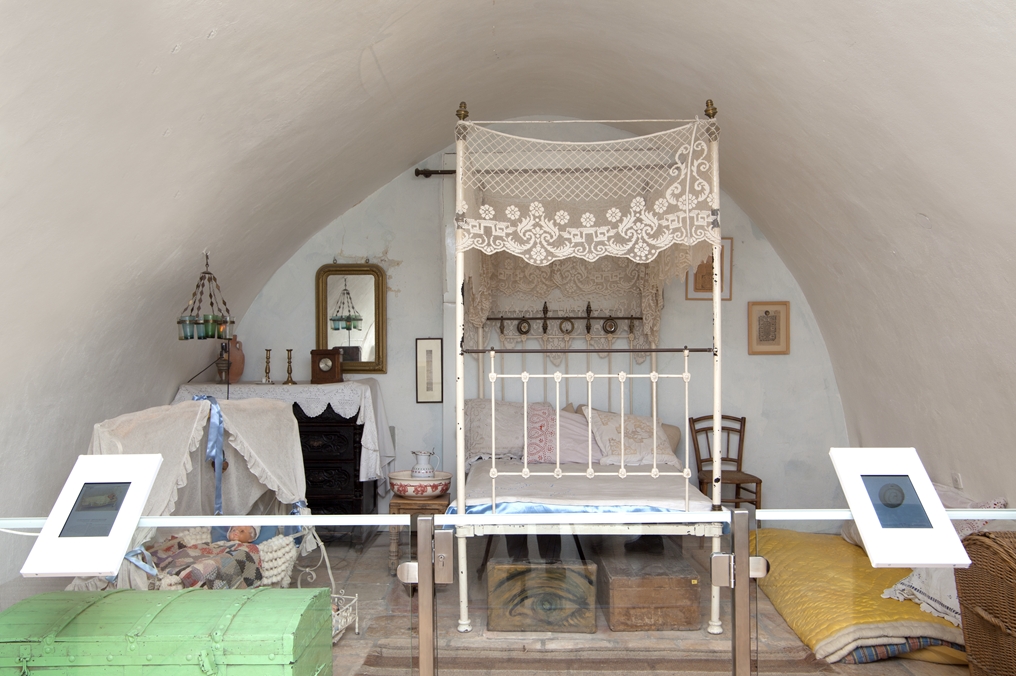 Birthing room (Photo: Ran Arda)
Birthing room (Photo: Ran Arda)"Later, during the 19th century, there was a large aliyah wave of Jews from around the world to Jerusalem, and what’s remarkable to see in our museum is the microcosm of the Jewish world reflected within the city. A fascinating blend of Jewish life from all the Diasporas came together, and suddenly, Jews met each other for the first time, learning traditions and customs, different attire, and child-rearing methods. They learned from each other, united, and underwent a sort of melting pot process. One of the beautiful aspects prominent in those years was the theme of mutual responsibility because, despite the differences, everyone lived side by side, took care of one another, and forged good connections".
With a Prayer Book in Captivity
The final station Ora takes us through is when the Jewish Quarter fell into Jordanian hands in 1948, and 1,800 citizens were evacuated from the Quarter to the new city. "Whenever the War of Independence is discussed, some make sure to mention the Palestinian refugees, but often forget that we, too, had refugees", she notes.
When Ora recounts this, she pauses for a moment and adds: "Immediately after the Quarter fell to the Jordanians during the War of 1948, the Jordanian commander lined up all the Jewish fighters in front of the Batei Machseh square, and then discovered he had only 35 tired and compliant fighters who managed to cause him so many losses. It was a significant embarrassment for him, as the Jordanian army was considered the best in the Middle East at that time, and it was ridiculous to think that thirty-five Jewish soldiers could cause him such significant losses. The frustrated commander spat on the ground and said, 'If I had known in advance, I would have driven you out with sticks'.
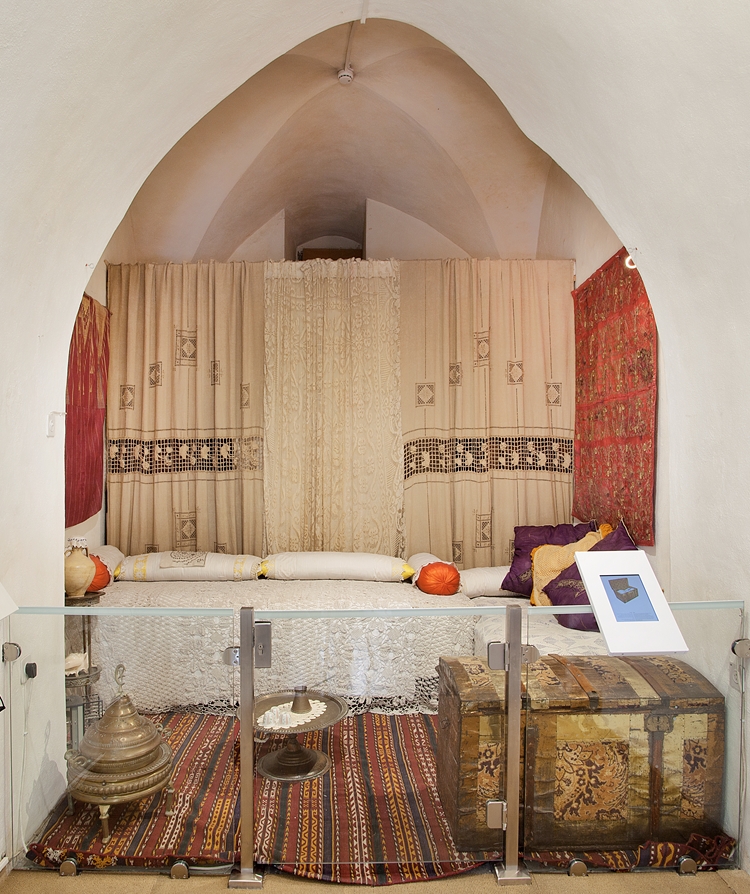 Ottoman room (Photo: Ran Arda)
Ottoman room (Photo: Ran Arda)"Then he took 300 civilians, including Rabbi Danziger, a very special 82-year-old Jew, into captivity, who wanted to encourage the captives, so he told them: 'Let’s study together, and you will see that the merit of the Torah will protect us'. Thus they went into the unknown, and I want to remind that just two weeks earlier, the fighters of Kfar Etzion had been taken into captivity, many of whom were executed. Also here in the Quarter, there was a feeling that they might never see their families again. Those Jews who were taken into captivity did not take sacred artifacts with them because they feared they would be destroyed or desecrated by the Jordanians. However, at that time, Rosh Hashanah and Yom Kippur were approaching, so the rabbi of the Kurdish community among the captives asked the Red Cross for papers and wrote the services of the High Holidays from memory. Those papers were later compiled into a prayer book, which you can see in our collection".

